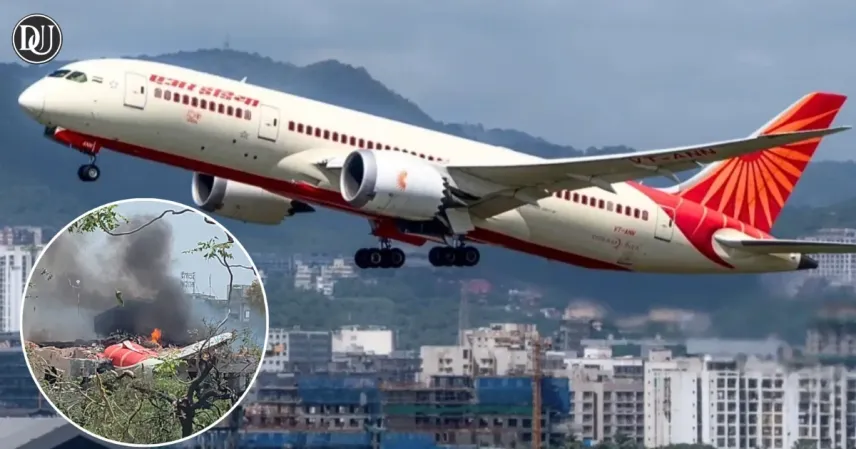The initial findings from the air india plane crash report regarding the tragic incident in Ahmedabad have been released by the Aircraft Accident Investigation Bureau (AAIB). The preliminary report indicates that the accident, which claimed lives and raised nationwide concern over aviation safety, was likely caused by an inadvertent fuel cutoff to both engines — an action that led to catastrophic consequences.
The flight was operating under routine conditions when the aircraft reportedly lost thrust mid-air, eventually crash-landing near the outskirts of Ahmedabad. The newly released report sheds light on the final moments inside the cockpit, the pilot’s communication with air traffic control, and early technical insights gathered from the aircraft’s data systems.
The Final Cockpit Conversation
One of the most chilling aspects of the air india plane crash report is the cockpit voice recordings captured during the final minutes of the flight. The last conversation between the two pilots reveals confusion and urgency. The first officer can be heard saying, “I didn’t cut off the fuel,” indicating a sense of disbelief as both engines suddenly lost power.
This communication, now publicly disclosed as part of the AAIB’s preliminary findings, has become a key focus in understanding how a possible error or mechanical issue may have led to simultaneous engine shutdown — a rare and highly dangerous event.
Technical Analysis: Fuel Cutoff Involved
According to the report, flight data from the aircraft’s black box shows a distinct moment where fuel flow to both engines dropped to zero, pointing toward a fuel shutoff command, either manual or due to an internal fault. Investigators are currently analyzing whether this was triggered by a mistaken action during an emergency procedure or by an uncommanded hardware malfunction.
Related article:Hyderabad Flight U‑Turn: What You Need to Know
The air india plane crash report emphasizes that both engines became inoperative within seconds of each other, a scenario that left the pilots with little to no time for corrective action. The plane, while still gliding, rapidly lost altitude and crash-landed in a nearby open field.
Weather and Environmental Factors
Weather conditions were ruled out as a contributing factor. The skies were clear, visibility was within safe limits, and there were no immediate environmental challenges reported in the flight path. This reinforces the theory that the failure stemmed entirely from within the aircraft’s systems or crew response.
The report confirms that no external force or weather anomaly led to the engine failure, narrowing the investigation to human and technical systems.
Was It Human Error?
While the AAIB has not definitively blamed the pilots, the investigation is looking into standard operating procedures followed during the flight. Questions have been raised over whether a misstep in cockpit coordination or misunderstanding during a routine checklist could have accidentally triggered the fuel cutoff valves.
You can also read: Korea Airplane Crash: Full Incident Report & Updates
The air india plane crash report does acknowledge the high-stress conditions under which pilots operate, especially when faced with unexpected alarms or alerts. Any action involving fuel systems typically requires dual confirmation by both cockpit crew members — a fact now under scrutiny.
Survivors and Eyewitness Accounts
Passengers who survived the crash have described feeling a sudden jolt, followed by a sharp descent and a rough landing. Several accounts mention the smell of fuel and moments of panic as the aircraft touched down without engine thrust.
Emergency responders reached the scene within minutes, and while many were injured, several lives were saved due to the crew's efforts to stabilize the aircraft and execute an emergency evacuation.
Eyewitnesses from the ground reported seeing the aircraft gliding with no sound, which supports the report's findings of a full engine shutdown before impact.
Impact on Air India and DGCA
The release of the air india plane crash report has led to immediate internal reviews at Air India and within the Directorate General of Civil Aviation (DGCA). The airline has pledged full cooperation with investigators and has temporarily grounded the aircraft model involved in the crash pending further checks.
Safety audits are now underway across all fleets to ensure that no similar configuration or mechanical issue exists on other operational aircraft. Pilot training protocols related to fuel systems and emergency handling are also under review.
Families Demand Transparency
Family members of the deceased have responded to the report with mixed emotions — some expressing gratitude for the progress in the investigation, while others continue to demand accountability.
Legal experts suggest that, depending on the final investigation outcome, claims of negligence or wrongful death may be brought forward. The government has assured full compensation and counseling for affected families.
What Happens Next?
The AAIB will continue its probe by inspecting engine parts, cockpit instrumentation, and data link logs. A more detailed final report is expected within a few months, which will include definitive conclusions and safety recommendations.
Meanwhile, Air India is preparing to release a public statement and may hold a press conference addressing the broader implications of the air india plane crash report and the steps it will take moving forward.
A Reminder of Safety Vigilance
This incident, and the air india plane crash report itself, serve as a reminder that even with modern aviation technology, human judgment and strict procedural discipline remain vital. It’s also a call for rigorous maintenance and clear communication protocols during in-flight emergencies.
Aviation authorities across the country are likely to adopt more proactive checks and simulations to ensure such tragic outcomes are not repeated.










